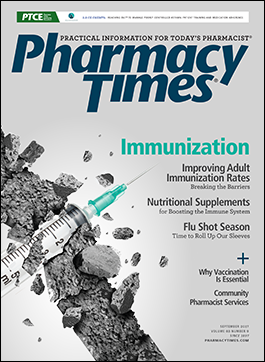Publication
Article
Pharmacy Times
The War on Drug Abuse A 3-Pronged Approach
Author(s):
Law enforcement must continue to concentrate on large-scale dealers that reap the monetary rewards of drug trafficking, ensuring that they receive hefty jail sentences and returning the forfeiture laws to a common-sense level so that these folks are punished by losing all their ill-gotten gains.
I have been in the business of fighting drug abuse for many years, just retiring for the final time from government after 49 years so I have seen the ebbs and flows. In the late 1960s, the heroin epidemic was raging in the inner cities, primarily affecting African-Americans. The heroin was 9% pure, compared with 50%-plus pure today, but the devastation was no different. Deaths due to overdose, violence in the form of robberies, and dealer wars were commonplace in some cities.
Along the way, the “War on Drugs” was announced. Ever since then, many of us have been asked if we are winning that war, with others deciding that we have performed dismally and that new efforts need to be initiated as the old ones aren’t working. Many think we lost the war on drugs some time ago.
The drug epidemic started with heroin. Then came powder cocaine, then crack cocaine, and now we are back to heroin/fentanyl/carfentanil. Along the way, clandestine methamphetamine became popular in some circles, and we are now seeing a rise in crystal methamphetamine coming from Mexico. Prescription drugs were always a problem, sometimes even leading the drug scourge, while marijuana quietly became either legal or semi-legal in parts of the United States.
Most experts who have been around for some time agree that this drug epidemic is the worst so far. The devastation that high-powered heroin has caused, which has now grown to include fentanyl and many of its analogs, is unprecedented. Overdose deaths are staggering, and even with the mitigation of these deaths by the introduction of nasal naloxone to law enforcement and even the public, the problem has gotten out of hand.
Most experts agree that it is a three-pronged approach of prevention/education, law enforcement, and rehabilitation. In a perfect world, prevention would be the obvious solution because if it is effective, the other 2 aren’t needed. We need to hammer the point home to young people and others that there are dire outcomes for those who go down the path of drug abuse. Of course, prevention and education do not always work for a variety of reasons.
Law enforcement receives the most publicity with drug raids, and large seizures of drugs and cash on the nightly news. This segment includes local cops on the beat dealing with low-level dealers and addicts committing crimes and overdosing, to federal agents desperately trying to stop the flow of illicit drugs into the United States using motor vehicles, aircraft, and boats, that sometimes unwittingly deliver this poison from all over the world.
Rehabilitation is an extremely important part of this equation and the one that is the least properly funded. Oftentimes the courts need to be involved to force people into rehab programs, but many struggling with drug addiction hit rock bottom and reach out for help on their own. Some simply either aren’t ready for rehab or decide that they want to continue to chase the next “high.” They live in a precarious state, flirting with death daily. Relapse is common even among those with the best intentions, and insurance companies oftentimes will not offer a second chance.
This three-pronged solution is still the answer to the drug epidemic. Those on the prevention side must start in the schools at the elementary level, spreading the truth about the devastation that drugs cause. This education must include prescription drugs that are abused, alcohol, marijuana, tobacco, as well as illicit opioids and stimulants. The true benefits of medical marijuana need to be explored vigorously, and if proven effective, should be offered in pharmacies via a legitimate prescription that was written after a thoughtful examination.
Law enforcement must continue to concentrate on large-scale dealers that reap the monetary rewards of drug trafficking, ensuring that they receive hefty jail sentences and returning the forfeiture laws to a common-sense level so that these folks are punished by losing all their ill-gotten gains. Part of the problem is that prevention, law enforcement and rehab are often at odds with one another, competing for grant money and other sources of funding, which causes friction. Instead, all 3 must work together toward the common good.
Cmdr Burke is a 40-year veteran of law enforcement and the past president of the National Association of Drug Diversion Investigators. He can be reached by e-mail at [email protected] or via www.rxdiversion.com.

Newsletter
Stay informed on drug updates, treatment guidelines, and pharmacy practice trends—subscribe to Pharmacy Times for weekly clinical insights.






